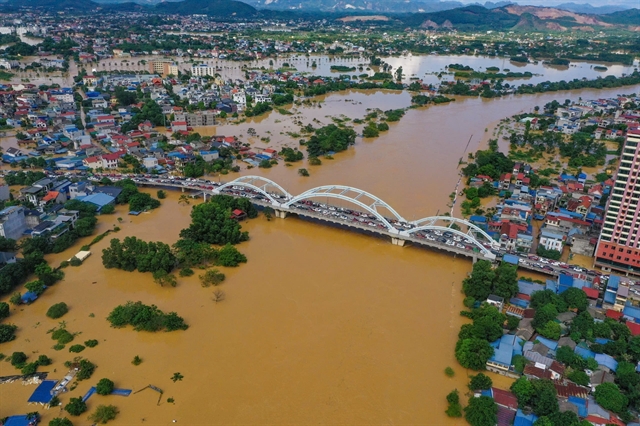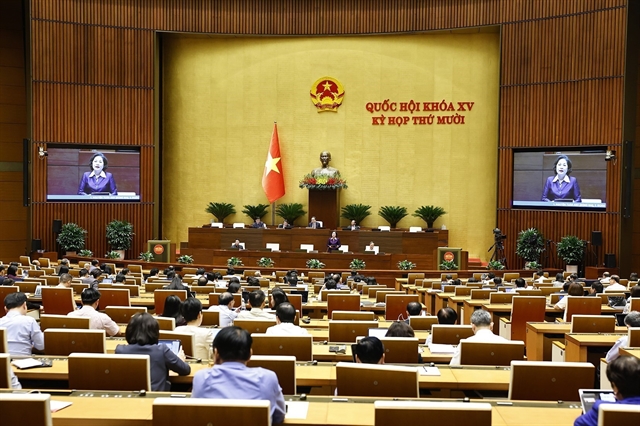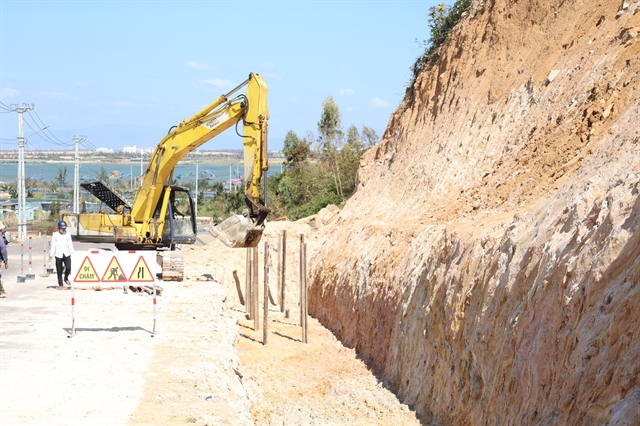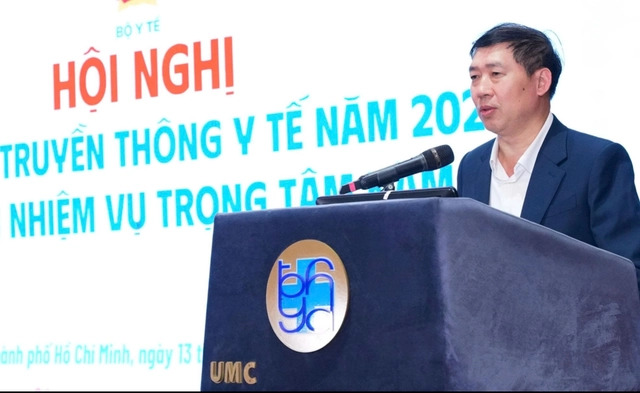 Opinion
Opinion
.jpg)
 |
| The central area of the northern province of Thái Nguyên has been submerged in floodwaters triggered by Typhoon Matmo. VNA/VNS Photo Phạm Tuấn Anh |
Since early September 2025, Việt Nam has been hit by a series of severe natural disasters, including back-to-back storms, torrential rains with intense lightning, flash floods and landslides, which have caused serious human and economic losses. These events highlight the increasingly extreme and unpredictable nature of climate change.
Associate Professor Mai Văn Khiêm, Director of the National Centre for Hydro-Meteorological Forecasting under the Việt Nam Meteorological and Hydrological Administration, spoke with VietnamPlus about expected weather patterns and disaster risks for the rest of 2025.
What are your assessments of the hydro-meteorological trends in the final months of 2025? Which types of natural disasters should we be most alert to?
In the remaining months of 2025, complex hydro-meteorological developments are expected.
The ENSO phenomenon (which includes both El Niño and La Niña and is linked to air pressure oscillations between the eastern Pacific and the eastern Indian Ocean) is likely to remain in a neutral phase but with a slight tendency toward La Niña, possibly a short, weak La Niña episode.
Given this pattern, storms and tropical depressions will likely continue to form and impact Việt Nam. From now until the end of the year, two to four storms or tropical depressions are forecast to affect the East Sea (South China Sea), one or two of which may directly hit mainland Việt Nam.
According to climate patterns, October to November and the first half of December are typically when storms most affect central Việt Nam. However, under the influence of climate change, weather has become increasingly erratic, meaning northern provinces could still experience late-season storms.
Both the central and northern regions should therefore remain on high alert. In particular, from Quảng Trị southward to Lâm Đồng, storms and tropical depressions interacting with the first cold air masses of the season may bring prolonged heavy rain, triggering floods, flash floods and landslides in mountainous areas.
Starting from October 2025, cold air outbreaks will begin to affect the country, becoming stronger from November onward. Toward the end of the year, intensified cold spells could lead to severe cold snaps, frost and even ice formation in high mountain areas.
Residents are urged to stay vigilant against storms, heavy rain, flash floods, landslides, urban flooding and severe cold and to take proactive measures to minimise damage.
Despite progress in early warning systems, natural disasters still cause severe losses. What challenges remain in disaster prevention and response?
In recent years, Việt Nam has made significant advances in forecasting and early warning but limitations persist, particularly with highly variable and small-scale disasters.
For example, while the accuracy of storm track forecasting has improved, predicting storm intensity remains a difficult challenge for meteorologists worldwide, especially three to five days in advance.
Similarly, small-scale disasters such as thunderstorms, tornadoes, lightning, flash floods and landslides can typically be forecast only one to six hours ahead and localised heavy rainfall also remains difficult to predict.
Another challenge lies in communicating forecasts and warnings to remote areas, where access to electricity or mobile networks may be disrupted during major storms or floods.
Meanwhile, in several regions, disaster prevention infrastructure remains weak and limited resources hinder efforts to make timely and comprehensive investments.
What measures has the National Centre for Hydro-Meteorological Forecasting proposed to improve disaster prevention and enhance climate resilience?
We have proposed continuing to modernise observation technology and expand the national monitoring network.
In particular, we aim to develop advanced forecasting models and integrate artificial intelligence (AI) into operations to enhance analytical capacity, ensuring forecasts reflect real-world conditions more accurately, especially for extreme weather events.
Next, we must diversify communication channels to ensure warnings are delivered quickly, clearly and accessibly to people in vulnerable areas. Strengthening coordination between hydro-meteorological agencies, local authorities, response forces and the media is essential to translate forecasts into timely, concrete action.
At the same time, it is vital to train and improve disaster response skills within communities and incorporate disaster preparedness education into school curricula.
With these synchronised measures, disaster prevention efforts will become increasingly professional, enabling communities to adapt safely and reduce losses caused by natural hazards.
In the current context, what do you consider the most urgent and effective solutions to cope with climate change and extreme weather events?
In my view, the most fundamental and also the most urgent solution is to enhance forecasting and early warning capabilities, combined with strengthening community resilience.
This requires modernising observation technologies, increasing the density of monitoring stations and expanding ocean-based observations, including radar systems at sea and atmospheric sounding.
Based on these improvements, we can synchronise data, develop more precise forecasting models and closely monitor abnormal developments. At the same time, we must build rapid, user-friendly communication systems to deliver forecasts directly to the public.
In parallel, Việt Nam needs sustainable disaster prevention infrastructure, climate-resilient planning and development and a stronger public awareness and preparedness culture.
Only when information reaches communities early, promptly and proactively can we effectively mitigate the damage caused by climate change and extreme weather.
Looking ahead, what technological solutions or innovations will the centre adopt to improve early warning and community-based disaster risk management?
We are implementing a comprehensive modernisation plan to enhance forecasting and early warning capacity, contributing effectively to disaster prevention and sustainable development.
A key focus is to implement Resolution No 57-NQ/TW of the Politburo, which emphasises breakthroughs in science, technology, innovation and national digital transformation.
The hydro-meteorological sector has identified a major scientific and technological challenge to master AI technology in hydro-meteorological forecasting, to build an integrated AI-based forecasting system across multiple scales with high accuracy and automated operations.
We plan to prioritise the application of modern technologies such as AI, Big Data and the Internet of Things (IoT) across all professional processes, from data collection and analysis to forecasting and communication.
Mastering these technologies will not only improve accuracy and automation in forecasting operations but also pave the way toward a smart, multi-scale forecasting system that better serves citizens, authorities and economic sectors amid increasingly complex climate conditions.
In addition, we recommend that local authorities strengthen community-based disaster risk management by building two-way communication networks between forecasting agencies and grassroots communities and by organising training and drills to help residents respond more proactively.
Ultimately, only through the close integration of accurate forecasts, effective communication and active community participation can we enhance disaster prevention and minimise losses caused by natural hazards. — VNS
.jpg)



